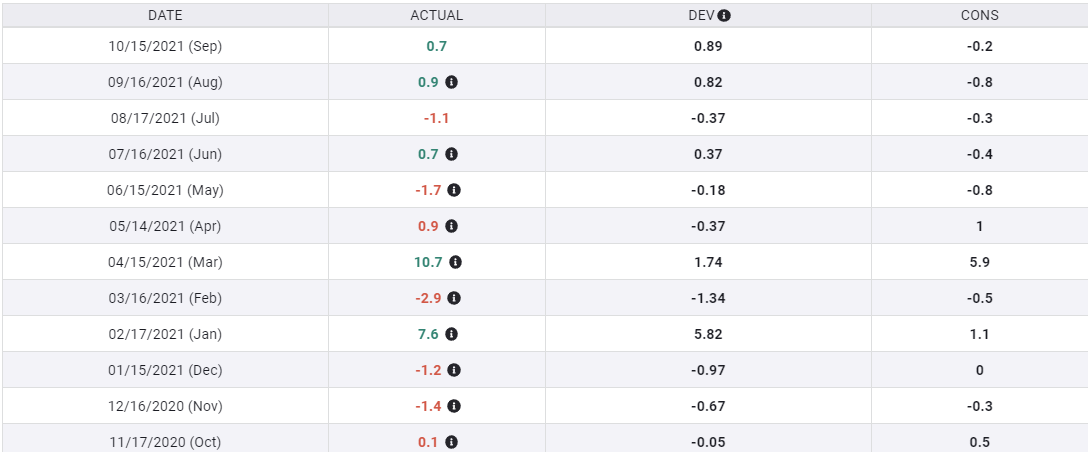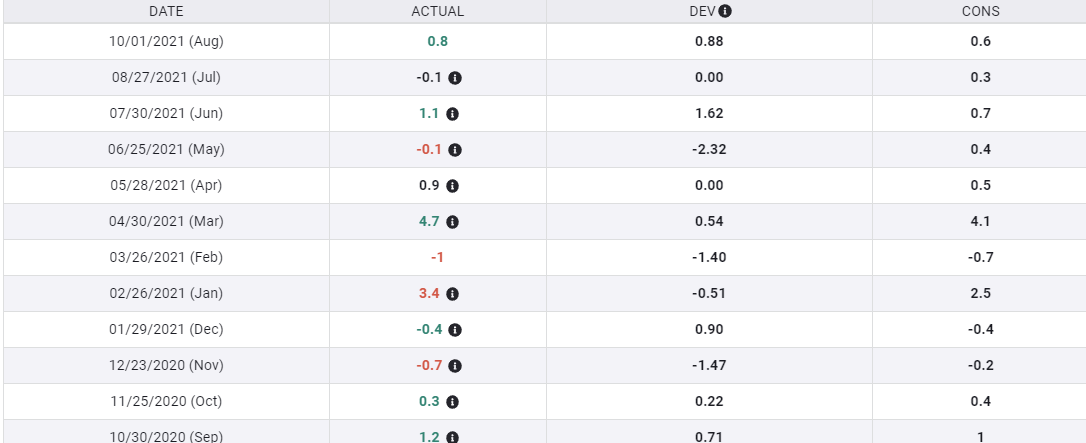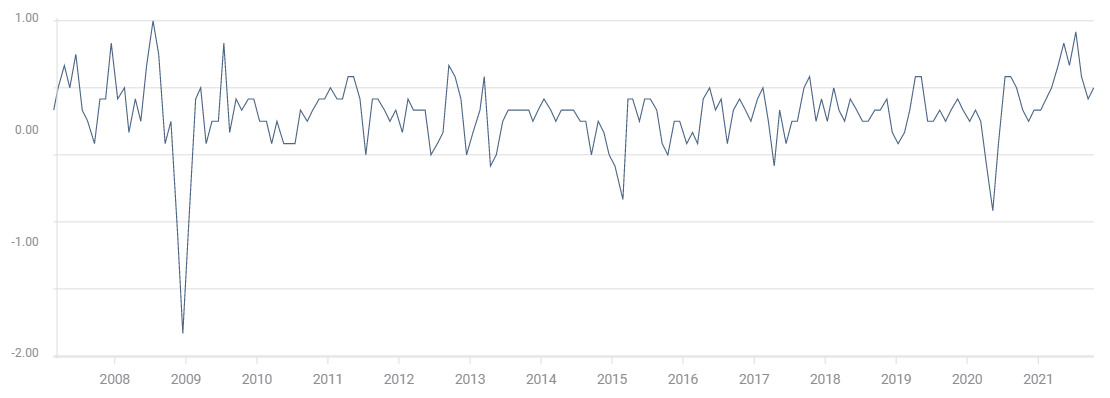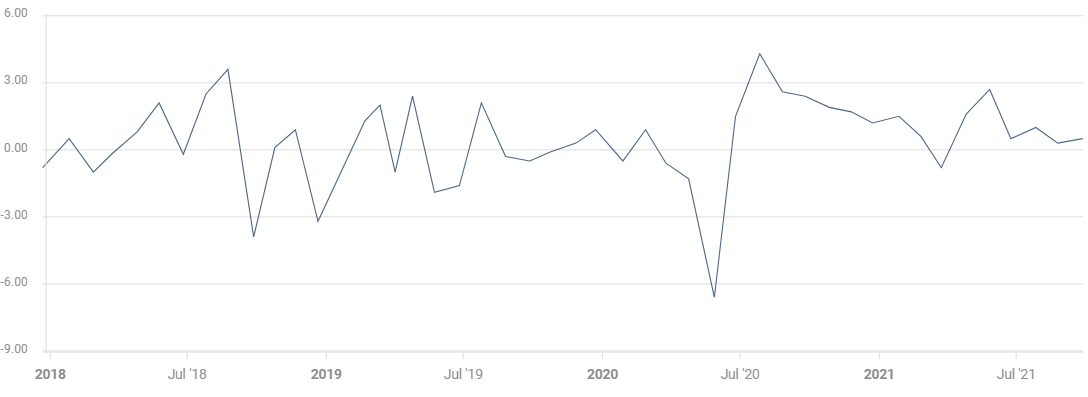- GDP forecast to dip sharply to 2.5% in the third quarter.
- Growth in the first quarter was 6.4%, in the second 6.7%.
- Supply-chain, labor market and pandemic problems complicate predictions.
- Federal Reserve to stay the taper course regardless of GDP.
Economic growth in the US appears to have slowed dramatically in the third quarter as labor and supply constraints and lingering pandemic problems hampered operations at firms nationwide. The novelty of more than 10 million unfilled jobs and more than 5 million unemployed, unprecedented government spending, Covid and vaccine fears and a quickly evolving economy have left analysts uncertain about how much damage may have been inflicted on gross domestic product (GDP).
The US government’s first assessment of economic activity will be issued by the Commerce Department on Thursday with the consensus estimate for a 2.5% annualized rate. That contrasts with the 6.7% pace in the second quarter and 6.4% in the first. The range of projections from the Reuters survey is unusually wide from 0.6% up to 5.2%.
Some estimates of growth have declined steadily as the quarter has advanced.
Economists at the Atlanta Fed track GDP with their widely followed GDPNow model that incorporates statistics as they are released. This forecast began third quarter estimates on July 30 at 6.1%. By September 28 the projection had fallen to 3.0% and two weeks later it had dropped to 0.5%. The October 27 release after Durable Goods Orders brought GDPNow to 0.2%..
The St. Louis Federal Reserve, the proprietor of the widely used FRED economic database, compiles a Real GDP Nowcast that has the third quarter growth running at 6.85%.
Consumption
The figures from the consumer side of the economy are mixed.
Retail Sales rose in the third quarter but modestly, averaging a 0.17% gain, up from a 0.03% monthly loss in the second quarter.
Retail Sales
FXStreet
Personal Spending averaged a healthy 0.63% increase in the second quarter. This dropped to 0.35% in the two months of the third quarter which have been reported. September's spending numbers will be issued by the Department of Commerce this Friday, with the consensus estimate for 0.50%.
Personal Spending
FXStreet
But a good portion if not all of the spending increases in July, August and September were due to inflation which averaged 0.40% a month. Prices were even more volatile in the second quarter climbing an average 0.77% a month.
CPI (MoM)
FXStreet
A further complication comes from automobile sales. Vehicle production has been curtailed by the semiconductor shortage with the purchases of light cars and trucks down 21% in the third quarter. Dealer stocks have fallen but with the chip shortage it is uncertain whether the car makers were able to to raise production in the third quarter.
Business spending and inventories
The Durable Goods category Nondefense Capital Goods Orders ex Aircraft is often used as a proxy for business spending. These orders averaged 1.4% a month in the second quarter. In July, August and September that dropped average to 0.53%.
Nondefense Capital Goods Orders
Inventories are used by economists to estimate future production, on the logic that purchases from stockpiles or dealer lots will have to be replaced by manufacturers, guaranteeing a certain level of output. In the government’s calculation a drop in inventories becomes an addition to GDP, but the amount is difficult to compute beforehand.
Business spending appears to have slipped by almost two-thirds from the second quarter to the third, and if that is accurate will compromise GDP.
Trade deficit
In government accounting the trade deficit subtracts from GDP and a surplus adds to it. The US has not had a monthly trade surplus in over a generation so it is not a matter of an absolute value but the variation.
The deficit for goods and services averaged $71.1 billion in the second quarter. In the two reported months of the third the average was $71.8 billion, a 1% increase. September’s deficit is expected to increase to $74.1 billion when it is reported on November 4, as the recovering US economy draws in more goods and services. If that is correct it would bring the quarterly average to $72.6 billion, a 2.1% jump and enough to lower GDP.
Conclusion
The biggest questions for markets are how long will the supply and labor shortages last and will they improve from here or are there deeper problems ahead.
What will be the impact of the trillions of dollars of new spending proposed, but by no means certain, from the Biden administration as it encounters an overheating and unbalanced economy?
Third quarter GDP will be an first exercise in assessing the extent of the economic impact. The wide range of the forecasts for GDP describes just how unusual the situation is and how ill-equipped analysts are to judge without historical guidelines.
We can recall the initial estimates for the labor market last spring around the lockdowns when the collapse and recovery forecasts were in error by factors not percentages. This is not to question economists’ methods but only to point out the difficulty of statistical guesses in new and changing circumstances.
Third quarter GDP is likely an afterthought for the Federal Reserve and its expected taper commencement next Wednesday. Nonetheless, a better than expected reading will support Treasury rates and the dollar and give credence to the idea that the US economy may yet exhibit its traditional resilence. While a worse than anticipated GDP result will change little.
Information on these pages contains forward-looking statements that involve risks and uncertainties. Markets and instruments profiled on this page are for informational purposes only and should not in any way come across as a recommendation to buy or sell in these assets. You should do your own thorough research before making any investment decisions. FXStreet does not in any way guarantee that this information is free from mistakes, errors, or material misstatements. It also does not guarantee that this information is of a timely nature. Investing in Open Markets involves a great deal of risk, including the loss of all or a portion of your investment, as well as emotional distress. All risks, losses and costs associated with investing, including total loss of principal, are your responsibility. The views and opinions expressed in this article are those of the authors and do not necessarily reflect the official policy or position of FXStreet nor its advertisers. The author will not be held responsible for information that is found at the end of links posted on this page.
If not otherwise explicitly mentioned in the body of the article, at the time of writing, the author has no position in any stock mentioned in this article and no business relationship with any company mentioned. The author has not received compensation for writing this article, other than from FXStreet.
FXStreet and the author do not provide personalized recommendations. The author makes no representations as to the accuracy, completeness, or suitability of this information. FXStreet and the author will not be liable for any errors, omissions or any losses, injuries or damages arising from this information and its display or use. Errors and omissions excepted.
The author and FXStreet are not registered investment advisors and nothing in this article is intended to be investment advice.
Recommended Content
Editors’ Picks

AUD/USD: Further recovery targets 0.6400
AUD/USD soared to three-day highs around 0.6180 on Wednesday, bouncing back from multi-year lows near 0.5900 as easing worries over US tariffs helped fuel the recovery.

EUR/USD: Next on the upside comes the YTD peaks
EUR/USD ended the day with modest loses, coming under renewed downside pressure after hitting tops near 1.1100 the figure on the back of the late bounce in the Greenback.

Gold drifts higher above $3,050 amid escalating US-China trade tensions
Gold price edges higher to around $3,080 during the early Asian session on Wednesday. The safe-haven demand amid escalating trade tensions between the United States and China provides some support to the precious metal.

Ethereum: Trump's tariff pause lifts ETH as SEC approves options trading on ETH ETF
Ethereum gained 13% on Wednesday after President Trump announced a 90-day tariff pause on 75 countries. Following the announcement, the SEC approved Fidelity, BlackRock, Bitwise and Grayscale applications to allow options trading on their spot Ether ETFs.

Tariff rollercoaster continues as China slapped with 104% levies
The reaction in currencies has not been as predictable. The clear winners so far remain the safe-haven Japanese yen and Swiss franc, no surprises there, while the euro has also emerged as a quasi-safe-haven given its high liquid status.

The Best brokers to trade EUR/USD
SPONSORED Discover the top brokers for trading EUR/USD in 2025. Our list features brokers with competitive spreads, fast execution, and powerful platforms. Whether you're a beginner or an expert, find the right partner to navigate the dynamic Forex market.




